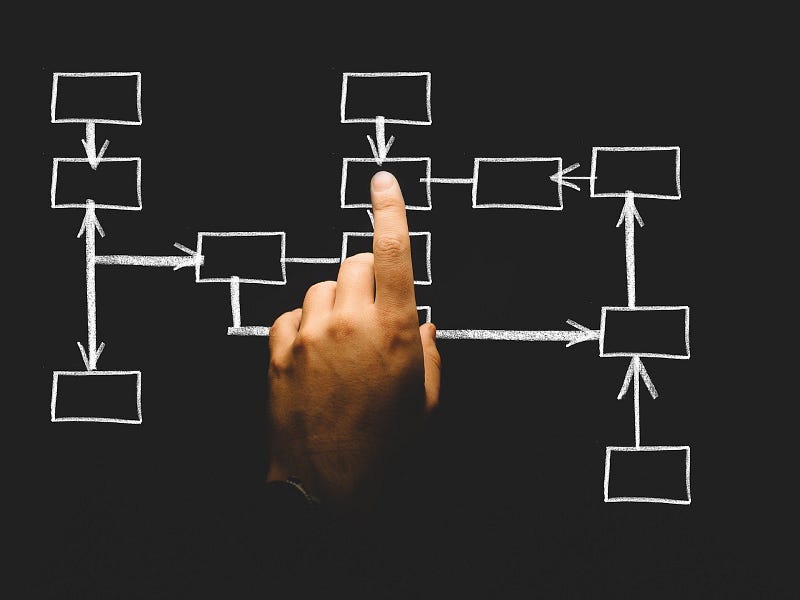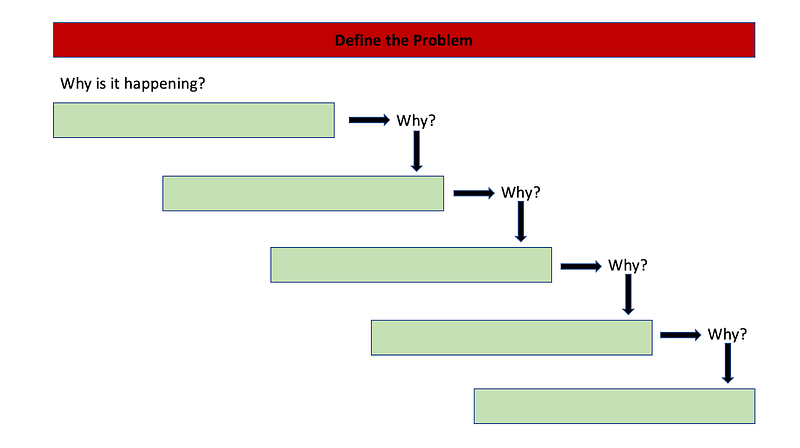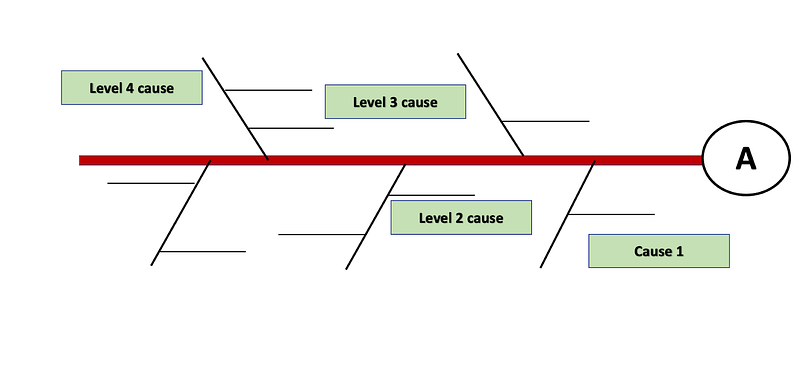What should you do to tackle lack of accountability and achieve permanent change?
Our parents used to discipline us for not behaving well. It didn’t seem fair at the time, but they were trying to teach us about accountability in life. Unfortunately, disciplinary actions do not always lead to their intended outcome.
These lessons are also applied in the workplace. According to ongoing leadership surveys, the issue of accountability always comes out on top. The most comprehensive one was spawned several years ago by 40,000 companies showing that 82% of leaders have limited to no ability to hold others accountable for the outcome of their work. This is a problem — not only for businesses and organizations — but for society at large, spawning various dimensions, including ethics, wealth, health, relationships, and many more. When we lack accountability, our ability to thrive as individuals, employees, citizens, partners, and parents is at risk. This creates ripple effects that lead to suboptimal performance, blame, and discord.
Moreover, accountability extends to both internal and external stakeholders. Internally, lack of employee accountability is a phenomenon that can harm profit margins, and externally, they could fail the customers and blame the customer instead of learning and fixing the issue. However, as you’ll learn in this article, this is a superficial view of employee accountability that fails to account for its root causes and ultimate effects.
Here, we’re going to take a thorough look at the issue of employee accountability — both in the context of organizations and the societies in which they operate. Our goal is to highlight the flaws exhibited by most conventional theories and give alternative solutions for sustainable improvement.
To begin, let’s take a closer look at employee accountability itself.
What Is Employee Accountability?
In the simplest terms possible, employee accountability means that employees should be accountable for their actions and results, regardless of position, title, or level. However, it’s impossible to talk about employee accountability without covering the concept of accountability more generally.
General accountability can be defined as an acceptance of personal responsibility for one’s actions and resulting outcomes.
However, accountability is rarely entirely personal — there’s also an external element to it.
We can generalize this as the ability to assign ownership of actions and their resulting outcomes to the parties responsible.
In everyday life, this second definition of accountability receives the most attention. For example, when a politician is caught in a lie, people often demand that they be held accountable. If they are, an apology or resignation typically follows.
As members of countless organizations (i.e., businesses, countries, families, etc.), accountability is a social mechanism that aligns our actions with the greater good rather than self-interest. Without it, these organizations typically fail.
Accountability is something that organizations need.
Why is it Important?
While we’ve briefly covered the importance of accountability in a general sense, it’s important to dig deeper into why it is a crucial part of business management.
Accountable employees take ownership of their role in a task and any resultant outcomes. They know what is expected of them and go above and beyond to make sure it gets done. An employee with high levels of accountability will be more productive, engaged, and committed to their job.
A lack of employee accountability can lead to:
- Confused Priorities: Employees will have difficulty prioritizing work because they don’t feel responsible for the outcome.
- Confused Roles: They may step on each other’s toes because they aren’t clear on what is expected of them or who owns which tasks.
- Low Engagement: They can become less engaged and motivated. After all, there isn’t much at stake!
- Ineffective Execution: Work will not get done, tasks will take longer than expected, and employees won’t be able to track whether the quality of their work is up to par.
Conventional Theories and Employee Accountability
A lack of employee accountability can be costly (for many of the reasons discussed above). As a result, a sizable body of literature attempts to identify the phenomenon to rectify the problem.
Here are some of the main causes of a lack of employee accountability:
- A lack of consequences. When employees know they can get away with minimal or sloppy work, many will often seize the opportunity.
- A lack of oversight. When employees feel that no one knows or cares about their actions, it’s natural to feel less accountable for the results.
- A lack of collaboration. When employees compete with one another, it’s easy to blame others for negative outcomes.
It’s easy to imagine any of the scenarios mentioned above. However, you should know that they are only symptoms of a much larger issue.
Let’s examine what this means in greater detail.
What’s Really Behind the Lack of Employee Accountability?
Organizations (i.e., businesses, offices, branches, etc.) are complex systems because they’re made up of human beings — and human beings are as complex as they come. Since members of an organization have common goals, every interaction can potentially create a ripple effect that disrupts or helps the organization.

Therefore, it’s impossible to make any meaningful recommendation in response to an organization’s lack of employee accountability without first understanding the organization itself. Addressing the causes above may solve the problem at one organization and prove inadequate in another.
That’s why so many conventional theories choose to focus on addressing the symptoms of a lack of accountability. It’s far easier — at least in theory than hunting the root issue(s) at play.
However, this approach rarely yields meaningful solutions. Therefore, you need to go deeper — to the root cause!
Conventional Methods That Tackle This Issue
Performing a Root Cause Analysis (RCA) can be a powerful tool for finding and addressing problems within an organization. The underlying assumption is that it’s far more productive to treat the underlying issues than to address the symptoms. That way, you guarantee that the issue is (semi-)permanently dealt with.
There are a number of standard RCA techniques:
- Five Whys Method: it is an interrogative technique that can be used to (eventually) reach the root cause of an issue.

- Fishbone Diagram: it is a visual representation of cause and effect. It’s more structured than other brainstorming methods (e.g., the Five Whys Method) that can be used to identify the source of an issue.

- Scatter Graph Method: The Scatter Plot Method is a statistical technique that looks for a correlation between a cause and an effect.

These methods are powerful when applied to linear systems (e.g., a product’s functionality). However, organizations aren’t linear systems — they’re complex! Therefore, we’ll have to look further into the RCA toolkit for answers.
The Iceberg Model for Tackling Employee Accountability Issues
There’s a powerful tool from system thinking known as the Iceberg Model. This method addresses the need for a greater understanding of organizational complexity by breaking problems down into four main levels.
They are:
Event: It is the level of everyday experience. It’s the way a problem manifests itself in the world.
- Example: Steve comes to work late.
Pattern: it is below the event level and represents the sum of many similar observations or experiences.
- Example: You check the records and realize Steve has been late every day this week.
Structure: it tries to identify the systems causing the pattern of events.
- Example: Steve says it’s because he’s been up late trying to finish work that wasn’t completed during the workday.
Mental Model: it looks at all the beliefs and assumptions that facilitate the structural level of the problem.
- Example: You realize Steve finds it hard to relax when he has unfinished work.
The Iceberg Method is an excellent asset for any organization that wants to get to the bottom of a complex issue. But, first, you need to break the issue down into its four levels and take action at either the structure or mental model levels.
Taking action at either of these levels tends to lead to sustainable improvement in complex issues within complex systems (e.g., a lack of employee accountability).
Returning to the example above, you might decide not to delegate time-consuming tasks to Steve when the workday is closing. Or, you might choose to offer all your employees a free subscription to a meditation app so that they (but especially Steve) have the means to relax. But, again, these solutions figure out the root cause of the issue and are far more likely to address it than asymptomatic solutions such as penalizing lateness.
What’s the Key Takeaway from This?
Employee accountability is a complex issue that can’t be effectively tackled using one-size-fits-all solutions. Instead, we recommend using Root Cause Analysis (RCA) techniques like the Iceberg Model. This method breaks down problems into four main levels: event, pattern, structure, and mental model.
By taking action at either the structure level or mental model level, organizations can achieve sustainable improvement regarding employee accountability issues. This — in turn — leads to agile, high-performing teams.
References
Enfinger, K. L., & Mitchell, P. S. (2010). Scattergraph Principles and Practice: Evaluating Self-Cleansing in Existing Sewers Using the Tractive Force Method. World Environmental and Water Resources Congress 2010. https://doi.org/10.1061/41114(371)453
Ghanem, K., & Castelli, P. (2019). Accountability and Moral Competence Promote Ethical Leadership. Journal of Values-Based Leadership, 12(1). https://doi.org/10.22543/0733.121.1247
Han, Y., & Hong, S. (2016). The Impact of Accountability on Organizational Performance in the U.S. Federal Government: The Moderating Role of Autonomy. Review of Public Personnel Administration, 39(1), 3–23. https://doi.org/10.1177/0734371×16682816
Ilie, G., & Carmen Nadia Ciocoiu. (2010). Ilie G. and. Ciocoiu C.N. APPLICATION OF FISHBONE DIAGRAM TO DETERMINE THE RISK OF AN EVENT WITH MULTIPLE CAUSES APPLICATION OF FISHBONE DIAGRAM TO DETERMINE THE RISK OF AN EVENT WITH MULTIPLE CAUSES. MANAGEMENT RESEARCH and PRACTICE, 2(2), 1–20. http://mrp.ase.ro/no21/f1.pdf
Kim, S. E., & Lee, J. W. (2009). Impact of Competing Accountability Requirements on Perceived Work Performance. The American Review of Public Administration, 40(1), 100–118. https://doi.org/10.1177/0275074008329469
Lee, H., & Lee, H. (2017). Analysis and Effects of High School Students’ Systems Thinking Using Iceberg(IB) Model. Journal of the Korean Association for Science Education, 37(4), 611–624. https://doi.org/10.14697/jkase.2017.37.4.611
Rashid, F. (2014). Mutual Accountability and Its Influence on Team Performance. https://dash.harvard.edu/bitstream/handle/1/14226095/RASHID-DISSERTATION-2015.pdf?sequence=4
Serrat, O. (2017). The Five Whys Technique. Knowledge Solutions, 307–310. https://doi.org/10.1007/978-981-10-0983-9_32
Starner, T. (2015, June 2). Study: Workplace accountability requires a specific strategy. HR Dive. https://www.hrdive.com/news/study-workplace-accountability-requires-a-specific-strategy/400130/
https://www.hrdive.com/news/study-workplace-accountability-requires-a-specific-strategy/400130/
Why Is Accountability Important in the Workplace? (2020, December 22). PowerDMS. https://www.powerdms.com/policy-learning-center/why-is-accountability-important-in-the-workplace
